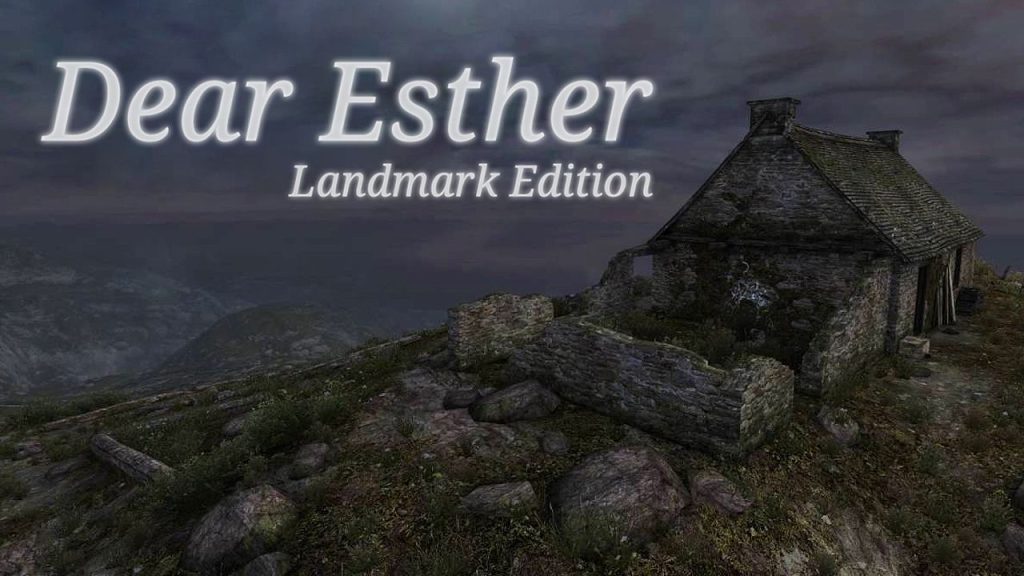Dear Esther is an adventure video game developed and published by The Chinese Room. It was originally released for Microsoft Windows in February 2012 and OS X in May 2012. Ports for PlayStation 4 and Xbox One were released by Curve Digital in September 2016. First released in 2008 as a free-to-play modification for the Source game engine, the game was entirely redeveloped for a commercial release in 2012. Wikipedia

Research exclusive to this game
Caracciolo, Marco. “Islands of Mind and Matter: Challenging Dualism in JG Ballard’s ‘The Terminal Beach’and The Chinese Room’s Dear Esther.” CounterText 4, no. 3 (2018): 341-361.
Colthup, Heidi. “‘You Were all the World Like a Beach to me’. The Use of Second Person Address to Create Multiple Storyworlds in Literary Video Games:‘Dear Esther’, a Case Study.” International Journal of Transmedia Literacy 4 (2018): 117-136.
O’Sullivan, James. ““The Dream of an Island”: Dear Esther and the digital sublime.” Paradoxa 29 (2017): 313-326.
Pinchbeck, Dan. “Dear Esther: an interactive ghost story built using the Source engine.” In Interactive Storytelling: First Joint International Conference on Interactive Digital Storytelling, ICIDS 2008 Erfurt, Germany, November 26-29, 2008 Proceedings 1, pp. 51-54. Springer Berlin Heidelberg, 2008.
Stobbart, Dawn. “‘I will abandon this body and take to the air’: The suicide at the heart of Dear Esther.” In Suicide and the Gothic, pp. 176-188. Manchester University Press, 2019.
Research that includes this game in its sample
Beyvers, Sarah E.: “»Do you see it now? Do you see it like I do?«: Unreliability and the Unstable Narrating Mind in DEAR ESTHER (2012) and LAYERS OF FEAR (2016).” In: Arno Görgen, Stefan Heinrich Simond (Hg.): Krankheit in Digitalen Spielen. Interdisziplinäre Betrachtungen. Bielefeld: transcript 2020, S. 163–187.
Carbo-Mascarell, Rosa. “Walking Simulators: The Digitisation of an Aesthetic Practice.” In DiGRA/FDG. 2016.